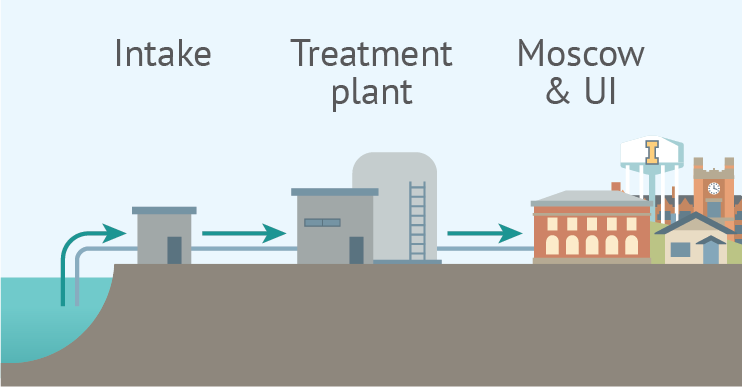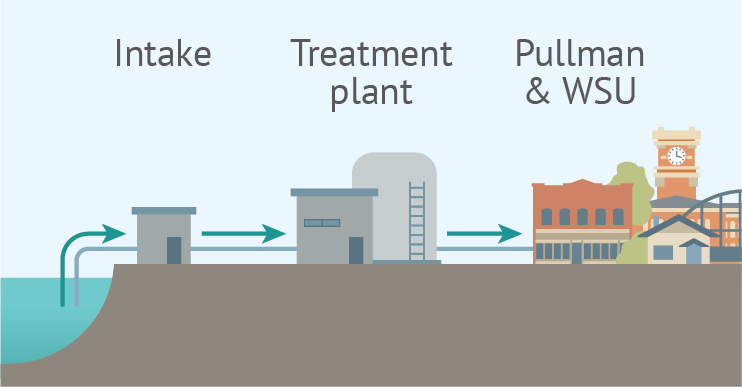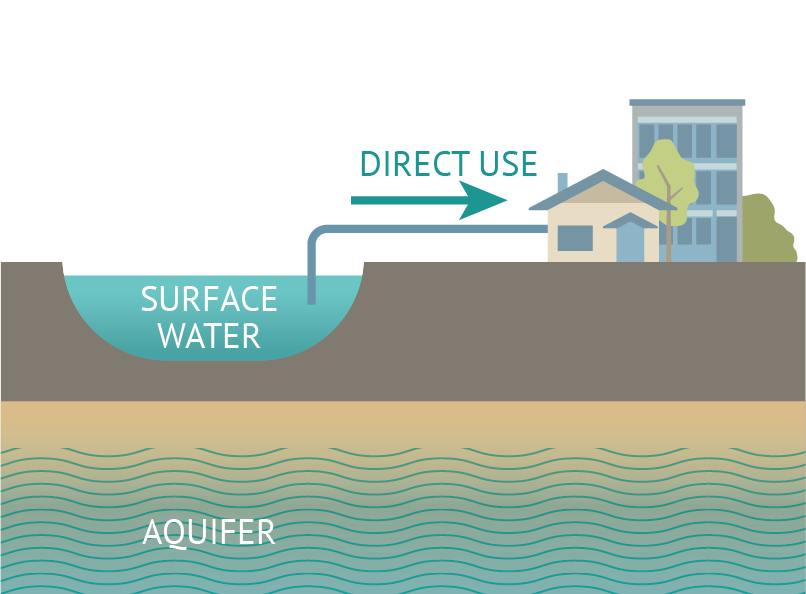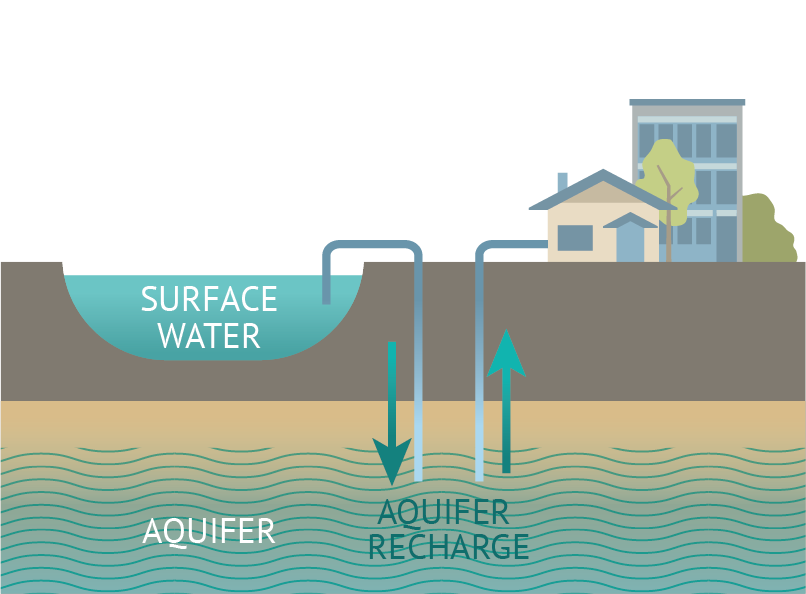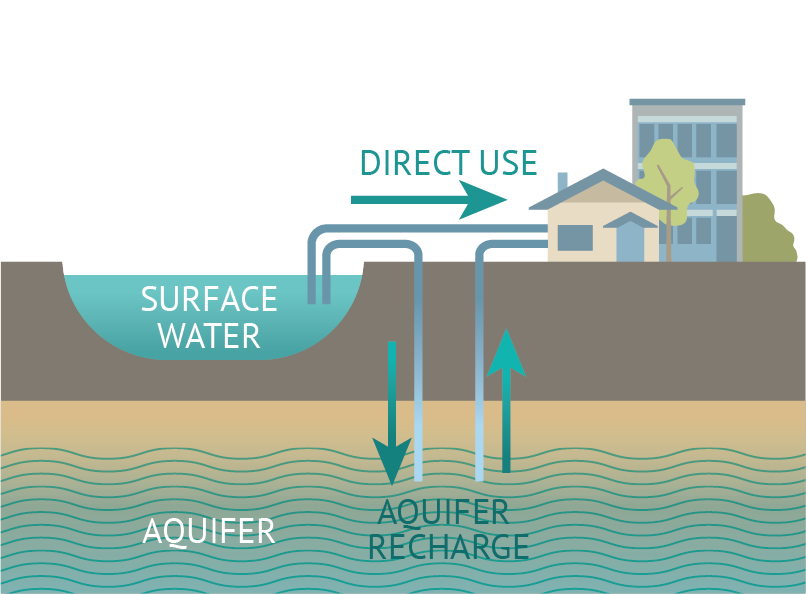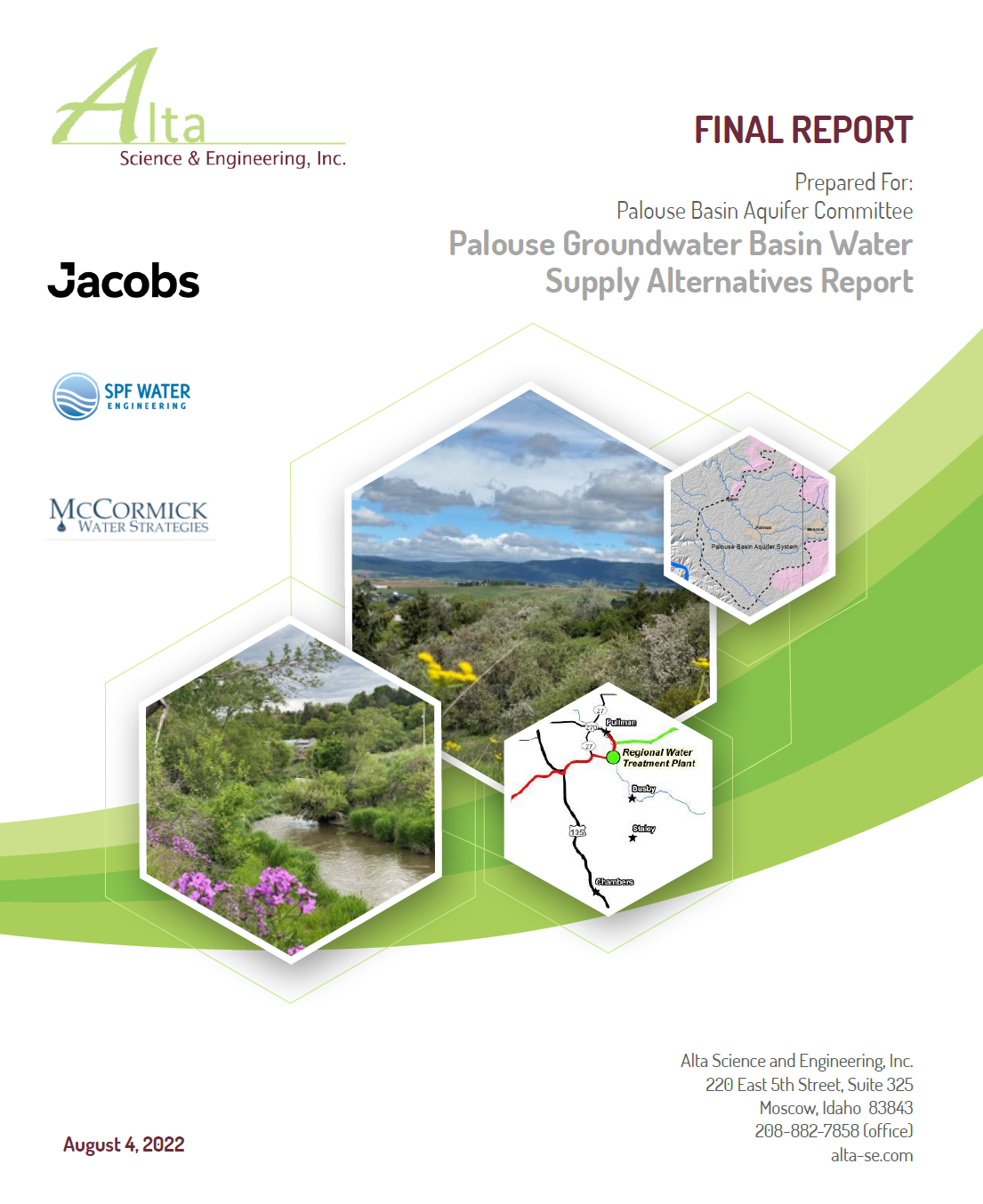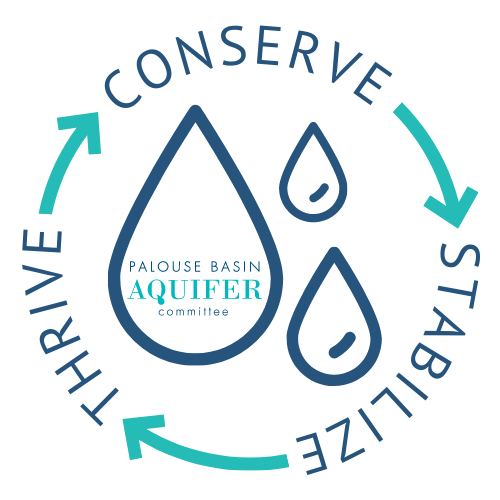Direct Use of Paradise Creek & South Fork of the Palouse River
It is estimated that 50 years from now, in order to accommodate an average 1% annual population growth and stabilize water levels in the aquifer, a supplemental supply of 2.3 billion gallons of water will be required annually. A project of this scale will require collaborative coordination, large financial investments, could take over a decade to implement, and take even longer to see the aquifer stabilize.
The preferred project involves three phased elements. The first is to implement additional conservation measures within the next 5-10 years with a goal of using 15% less water than is currently being used. Next would be to divert water from Paradise Creek and the South Fork of the Palouse River to supply the communities of Moscow and Pullman. New facilities would collect and treat the water before directing it into existing city water systems. The implementation schedule is estimated to take 10-15 years.
Other viable projects could still be pursued if any roadblocks or obstacles arise with this project. The details of all five projects can be found in the report below.
Project Elements
Project Benefits
On August 18, 2022, the Palouse Basin Aquifer Committee recommended focusing on a direct use strategy to help meet our region's future water demands and stabilize groundwater levels with the adoption of the Alternative Water Supply Analysis Report. There are several benefits to the "Direct Use Paradise Creek/South Fork" project:
Conservation as Step 1:
While we can’t conserve our way out of the problem, the most economical water is conserved water. Work on additional conservation measures can start immediately without costly investments in extensive infrastructure. Any and all additional conservation measures only help to extend the lifespan supply of any future water supply project.
Separated Project Elements:
The two infrastructure project elements are separated by the state line which helps to reduce the complexities for project logistics from a standpoint of water rights, transferring water, permitting, and funding.
Direct Use:
There are two options when utilizing local waters: direct use or aquifer recharge. The direct use option helps to alleviate any concerns for emerging contaminants that could be introduced to the aquifer system.
Lowest Initial Cost:
This project has the lowest initial cost for capital and ongoing operations and maintenance out of all projects proposed. The project elements in Pullman and Moscow are estimated to take approximately 12 years to implement with an initial capital cost of $74 million and have an annual operating cost of $1.6 million.
Learn More
Water Source Use Options
There are two main approaches for implementing and utilizing the supplemental water sources:
Direct Use
Diverting surface water from local waterways, treating it, then using it immediately by conveying it directly to residents through the municipal water systems.
PRO:
When surface water is used from a local waterway, its less water being pumped from the aquifer. Conceivably, this could eventually relieve the aquifer and decrease the rate of decline to the point of aquifer stabilization.
CON:
The high water flow times are during the winter and spring months when our community doesn’t use as much water. Direct Use won’t be as advantageous during the summer when the community uses the most water, unless a large storage solution is considered.
Aquifer Recharge
Diverting surface water from local waterways, treating it, then replenishing the groundwater by pumping it directly into the aquifer which could be used at a later time. This is also known as aquifer storage and recovery.
PRO:
If there is excess surface water collected during the time of year when there are high water flows, such as winter and spring months when our community doesn’t use as much water, it can be pumped into the aquifer for future use.
CON:
Surface water, even after being treated, likely still has some contaminates. There are concerns around putting treated water into an aquifer that has water that has been naturally treated over hundreds if not thousands of years.
Frequently Asked Questions
Water Supply Alternative Projects
Several other water supply projects could be pursued to help meet our region's future water demands and stabilize groundwater levels. These projects will be kept in the background as further refinement occurs with the above listed "Direct Use Paradise Creek/South Fork" project. Next steps may present obstacles as well as opportunities not known at this time. By keeping these other projects in mind, including their varying project elements, the Committee ensures flexibility during next steps while not losing forward momentum. More details on these projects can be found in the report below.
Alternative 1
Direct Use of the Snake River:
Surface water would be diverted from the Snake River and conveyed to a new regional water treatment plant. There it would be treated and conveyed into the existing municipal water system for Pullman and WSU. An additional pipeline would allow treated water to be conveyed to Idaho into the existing municipal system for Moscow and UI.
Due to the topography change from the Snake River to the Palouse region, the potential for an off-channel pumped storage reservoir and hydropower facility would be considered to help offset costs and create additional power for the region.
Alternative 2
Direct Use of the North Fork of the Palouse River:
Surface water would be diverted from the North Fork of the Palouse River near Palouse and conveyed to a new regional treatment plant. There it would be treated and conveyed into the existing municipal water system for Pullman and WSU. An additional pipeline would allow treated water to be conveyed to Idaho into the existing municipal system for Moscow and UI.
Aquifer Recharge from the South Fork of the Palouse River or Paradise Creek:
Surface water would be diverted from the South Fork of the Palouse River or Paradise Creek, treated, and injected into the aquifer system via recharge wells.
Alternative 3
Direct Use of Flannigan Creek:
Surface water from Flannigan Creek would be stored behind a new reservoir. Water would be pumped to Moscow to be treated and conveyed into the existing municipal water system for Moscow and UI.
Direct Use of the South Fork of the Palouse River:
Surface water would be diverted from the South Fork of the Palouse River, treated, and conveyed into the existing municipal water system for Pullman and WSU.
Alternative 4
Aquifer Recharge from the South Fork of the Palouse River:
Surface water would be diverted from the South Fork of the Palouse River in Pullman, treated, and injected into the aquifer system via recharge wells.
Aquifer Recharge from Paradise Creek:
Surface water would be diverted from Paradise Creek in Moscow, treated, and injected into the aquifer system via recharge wells.
Pullman Wastewater Reuse:
Using treated wastewater for irrigation in Pullman.
Moscow Wastewater Reuse:
Using treated wastewater for passive aquifer recharge in Moscow.
Additional Water Conservation:
Implementing conservation measures resulting in 15% less water than currently being used.

